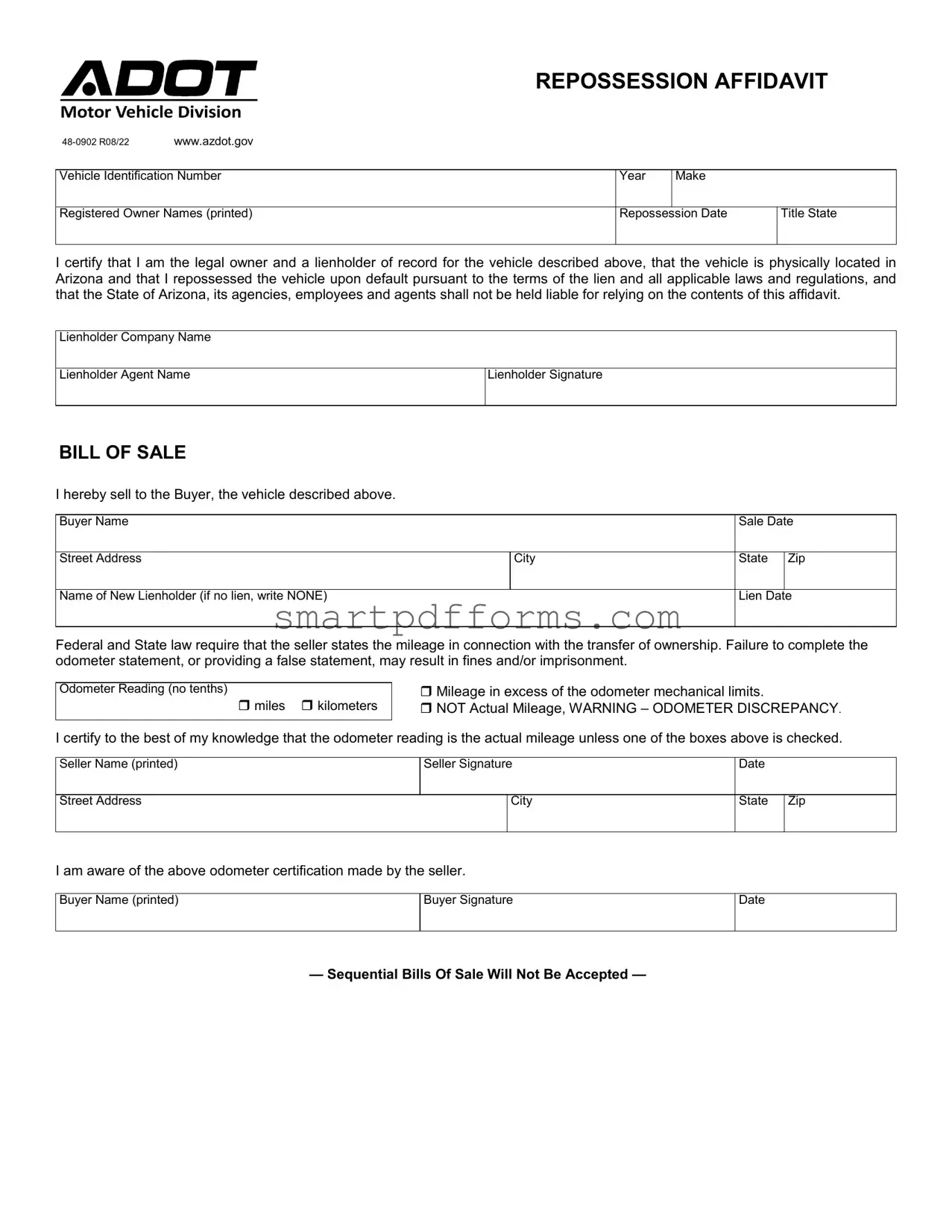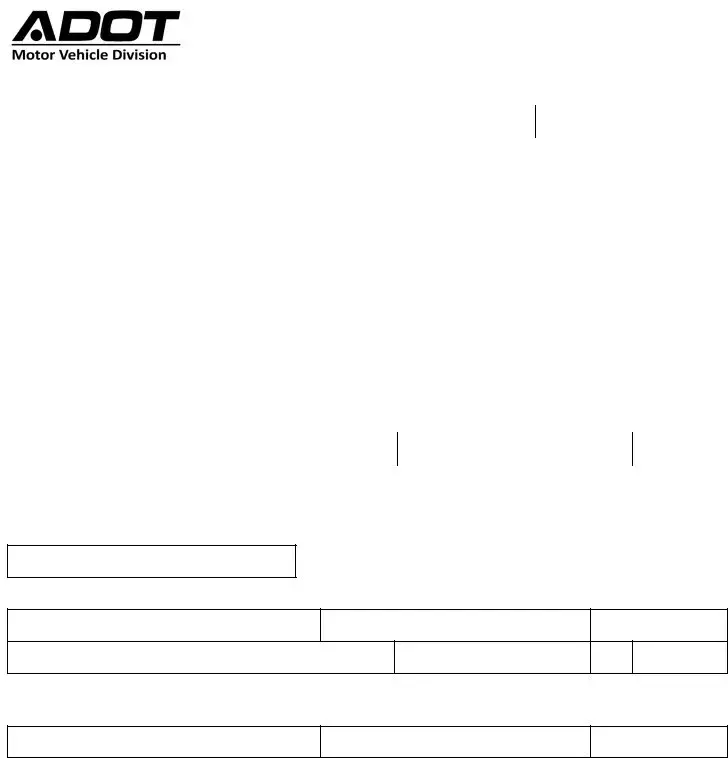In the realm of vehicular transactions within Arizona, the Repossession Affidavit form holds a singular importance, serving multifaceted roles that bridge the gap between legal ownership changes and regulatory compliance. This document, formally referenced as Vehicle Division 48-0902 R08/22 and accessible through the state's Department of Transportation website, encapsulates detailed information critical for the lawful repossession and subsequent sale of a vehicle. It meticulously records vehicle specifics including the Vehicle Identification Number, year, make, and the registered owner's name(s), alongside the repossession date and the title state, thus ensuring a transparent account of the vehicle's legal status and location. Further, it acts as a declarative statement where the lienholder, asserting legal ownership due to a lien on the vehicle, acknowledges repossessing the vehicle upon the original owner's default in accordance with lien terms and applicable laws. This affidavit also includes a segment serving as a bill of sale, which not only facilitates the sale from the lienholder to a new buyer but also necessitates the disclosure of odometer readings—a requirement underscored by federal and state mandates to prevent fraudulent practices. Through this dual function, the Repossession Affidavit form orchestrates a seamless transition of ownership while safeguarding all parties involved against potential liabilities, thereby playing a pivotal role in maintaining the integrity of vehicle transactions in Arizona.

